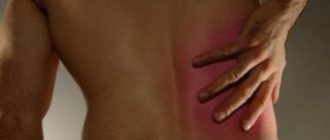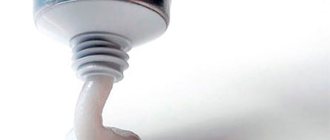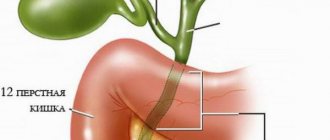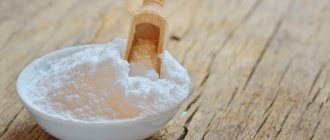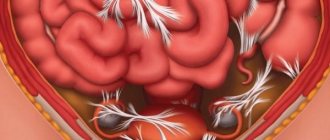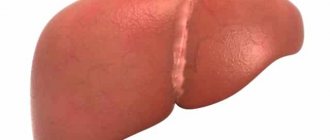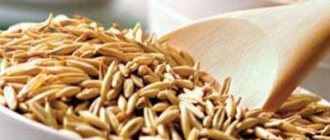Itchy skin appears due to allergies, dermatitis, problems with internal organs and other provoking factors. An unpleasant symptom causes not only physical but also psychological discomfort to a person. It is important to immediately understand the reasons for poor health and choose the right treatment regimen. Itching of the skin of the body is often encountered in liver diseases, which is observed on an ongoing basis. To improve your well-being, you will need to start therapy and follow medical recommendations.
Causes of itching
The occurrence of hepatic itching is explained by stagnation of bile, which is possible with liver problems. If the organ functions normally, then all produced substances leave the body without negative consequences. When a malfunction occurs, acids penetrate the bloodstream and enter all organs. The substances have a negative effect on the dermis and irritate the nerve endings, which causes a rash and severe discomfort.
Hepatic itching appears in certain pathologies:
- Liver lesions. The problem occurs due to viruses, parasites and toxic effects. Itching is often accompanied by intense jaundice - the skin turns orange. There is pain in the right hypochondrium, the patient complains of a burning sensation in the dermis.
- Cholestatic hepatosis during pregnancy. A woman has a strong sensitivity of liver cells to sex hormones. Because of this, problems with liver function are observed during pregnancy.
- Cholestasis. With pathology, there is obstruction or compression of the bile duct, which makes it difficult for the outflow of bile. Because of this, acids penetrate into the blood, causing body itching. Often a person experiences fever, digestive problems, weakness and other symptoms.
- Biliary cirrhosis. Itching in most cases affects the area of the arms and legs, and is often the only sign of the disease. Because of this, people have no idea what is really happening to their body for months and even years.
- Side effects from medications. Some medications provoke cholestasis, which leads to other pathological signs. Often the problem appears after a course of antibiotics and hormonal drugs.
Itching in liver diseases is considered a common occurrence, so most patients complain about it. If a diagnosis has not been made, it is recommended to consult a doctor and undergo an examination. It is necessary to find out exactly the reasons in order to start the right therapy and get rid of the discomfort.
Why does the skin itch due to liver pathology?
Hepatic itching is associated with impaired bile circulation. The pathology develops when the lumens of the bile ducts are blocked and goes through several stages:
- With normal liver function, the substances it produces leave the body as part of bile without any negative consequences.
- As a result of the failure, acids can enter the blood, and from there to all organs, including the skin.
- Irritated nerve endings lead to the appearance of a rash and discomfort.
Among the primary causes of itchy skin are liver damage with hepatitis C, cholestatic hepatosis, cirrhosis, and cancer processes. The presence of a rash on the body is also associated with taking certain medications that damage the liver.
In addition to liver disease, the skin may itch due to stone formation in the bile ducts. For this reason, the normal passage of bile is disrupted, it is absorbed into the blood, which leads to unpleasant sensations on the skin.
Symptoms of liver itching
With liver problems, the condition of the dermis changes and pathological signs appear. There are a number of characteristic symptoms that, if they occur, should be contacted by a medical specialist.
Signs:
- Changes in body skin tone. It may darken or turn pale, or turn yellow.
- Increased sweating. It is observed not only in summer, but also in the cold season.
- Pain in the right hypochondrium. The liver does not hurt for a long time, since it has few nerve endings. The appearance of aching pain indicates significant damage to the organ, so it is important to see a doctor immediately.
- Skin peeling and rash. These symptoms often occur in people who suffer from liver pathologies.
- Swelling occurs in the face and limbs.
- Blue stripes appear on the dermis.

There are different types of spots - ulcers, papules, spider veins, yellow plaques, and bruises may appear. People often complain of hives and the appearance of veins in the finger area. It is important to distinguish itching in liver diseases from other pathological conditions. People may confuse a rash with an allergy, but in the case of liver diseases, Citrine, Tavegil and other antihistamines will not help.
The doctor will give a definite answer after the person passes the examination. You can get rid of unpleasant symptoms if you start treating the underlying disease. Additionally, you will have to follow your doctor’s recommendations in order to quickly improve your health.
Right side itches under the ribs
Itching in liver diseases is a common occurrence.
The reasons for this may be: internal or external compression and blockage of the ducts that remove bile acids, damage to hepatocytes, primary biliary cirrhosis (100% of cases), jaundice (20-25% of cases), hepatitis, etc. Itching may be accompanied by the appearance of “liver stars”, various rashes and pigmentation of the skin (so-called “liver spots”).
Causes of itching
Itching of the skin that occurs with liver disease can occur anywhere on the skin or throughout the body. This is due to bile acids, which affect the nerve endings of the skin. This happens for the following reasons:
- Liver diseases, such as viral or parasitic forms of hepatitis, hepatosis, as well as toxic lesions. Along with irritation of the epidermis, manifestations of jaundice, burning, and pain in the right hypochondrium are possible.
- The appearance of stones in the bile ducts.
- Disturbances in the metabolic process, which leads to inflammation and swelling.
- Cholestasis. The disease begins due to blockage or compression of the bile ducts. This is often observed with cholelithiasis and malignant tumors.
- Cancerous tumors that change and disrupt the texture of cells and blood vessels.
- Biliary cirrhosis. The place where itching occurs in liver cirrhosis is the lower and upper extremities. In this case, scratching may be the only symptom that the liver is sick.
- Cholestatic hepatosis in pregnant women. The complication arises due to the great sensitivity of the liver to sex hormones.
Itching that torments the skin is a symptom of liver disease. Also leading to liver defects:
- Substances that are toxic to the body. Chemicals and metals, such as bilirubin or copper, can be toxic to the body in large doses.
- Viral diseases. Most often, the body itches due to hepatitis. There is an accumulation of salts and bilirubin, which penetrate into the blood, which provokes itching.
- Alcohol. Drinking drinks containing alcohol leads to liver cell death and cirrhosis.
- Pharmacy medicines. Chemotherapy measures, antibiotics, drugs that affect hormonal levels - all this negatively affects the liver. Phenothiazine, Phenobarbital, Erythromycin, as well as anabolic steroids have a particularly detrimental effect on the organ.
The disappearance of itching cannot always be considered a joyful event; it is possible that the disease has transformed into liver failure.
Cholestasis
The main cause of skin itching in liver disease is cholestasis, improper circulation of bile acids, and the penetration of toxic substances into the general bloodstream. Most often, the palms of the hands and feet begin to itch - this is how acids are released through the pores of the epidermis.
Why are these compounds so important for the body? The mission of acids is as follows:
- Dispersing fats and promoting their absorption.
- Elimination of food stagnation in the gastrointestinal tract and, as a result, relief from constipation.
- Absorption of fat-soluble vitamins.
- Normalization of the amount of cholesterol in the blood.
- Maintaining intestinal microflora with the elimination of harmful bacteria.
When the liver works correctly, acids are released along with bile, without entering the blood due to their toxicity. When an organ is damaged, the bile duct is compressed and clogged; for this reason, acids penetrate into the bloodstream, which provokes the appearance of rashes on the body. This mainly happens with cholangitis, cholelithiasis and cholecystitis.
If you treat the problem negligently, a failure occurs in the detoxification activity of the organ, and infection can penetrate through the scratched wounds, which threatens the appearance of ulcers and rashes.
How to determine if the cause of itching is liver disease
If the liver is “to blame” for the desire to itch, the itching is expressed quite strongly and without a specific localization. It often appears at night, and attempts to scratch the itchy stomach or arm remain unsuccessful. Antihistamines also do not help, although they are quite effective in eliminating allergy attacks.
Right side hurts
In addition to itching, the following symptoms indicate liver problems:
- The skin turns yellow or slightly red.
- Sweating increases.
- Various rashes form, for example, telangiectasia or acne.
- Attacks of heartburn and nausea occur.
- A strong foul odor of sweat appears.
- My right side hurts. There are disruptions in the activity of hepatocytes.
- Feces become unstable and may cause constipation or diarrhea.
- There is a burning sensation in the arms and legs, as well as a desire to scratch them.
- The tongue becomes covered with a white coating, sores and cracks form on it.
To determine whether a patient has problems in the liver area, the doctor may refer the patient for examinations:
- Ultrasound of the liver, pancreas and gallbladder;
- CT scan if the disease is advanced or to clarify the diagnosis if other methods have not helped;
- Blood clotting test;
- Blood sampling for biochemical and general examination.
Treatment methods
For liver diseases that cause itching in the patient, the following medications are prescribed:
- Detoxifying, helping to cleanse the blood by neutralizing harmful substances. The most popular is activated carbon.
- Antiphlogistic - eliminating inflammatory processes. Treatment of cholecystitis and cholangitis is rarely complete without them.
- Antiseptic and antiviral.
- Connecting bile acids, bilirubin and other harmful substances in human blood.
- Strengthening the immune system.
- Weakening the effect of bile acid on liver cells - hepatocytes, for example, Rifampicin, and improving its circulation: these include Metronidazole.
- Hepatoprotectors - to strengthen and renew liver tissue, as well as protect against substances that poison the body, such as medications or harmful, low-quality food, alcoholic drinks.
Also, liver disease affecting the skin is treated:
- Methods of surgical intervention.
- Vitamin therapy and probiotics.
- Discontinuation of pharmaceutical medications that provoke cholestasis.
Preventive measures
To avoid having to treat itchy skin, you need to be more attentive to your health, and also take care of your liver in advance. For this it is recommended:
- Avoid overheating of the skin - do not go to baths or saunas and do not neglect a cold shower in the hot season.
- Avoid underwear made from synthetic fabric.
- Get rid of bad habits, including smoking and drinking alcohol.
- Use gels or ointments that cool skin cells. Often such preparations contain phenol or menthol, which have an antipruritic effect on the skin.
- Do not overload yourself with physical activity and excessive emotions, which can lead to stress.
- Stop taking medications if they cause skin irritation.
Proper nutrition
In addition to the fact that you need to carry out treatment and take preventive measures, you should also think about your diet. The following products are useful to relieve itching:
- Vegetable based soups. First courses containing meat, mushroom and fish broth are prohibited.
- Sunflower and butter.
- Low-fat fermented milk products, for example, cottage cheese or sour cream, cheese.
- Lean poultry meat, such as chicken - boiled or baked, lean beef. It is better to keep fatty meat and lard prohibited.
- Various cereals.
- Honey and sugar.
- Bread and other baked goods based on rye or wheat flour. But bread products made from butter dough are contraindicated.
- Vegetables, berries, fruits (with the exception of overly sour types). Radishes, radishes, and green onions should not be eaten. Sorrel and spinach also remain prohibited.
- Juices, jelly, jam from natural products, without the addition of chemicals.
- Lightly brewed tea and coffee with cow's milk. It is forbidden to consume black coffee and cocoa.
Source: https://limto.ru/cheshetsja-pravyj-bok-pod-rebrami/
Treatment options
If body itching occurs due to liver disease, you will have to immediately begin therapy to restore health and prevent negative consequences. A person is advised to consult a doctor to choose the right treatment regimen. It’s easier to get rid of the disease in the early stages, so you need to go to the hospital at the first sign.
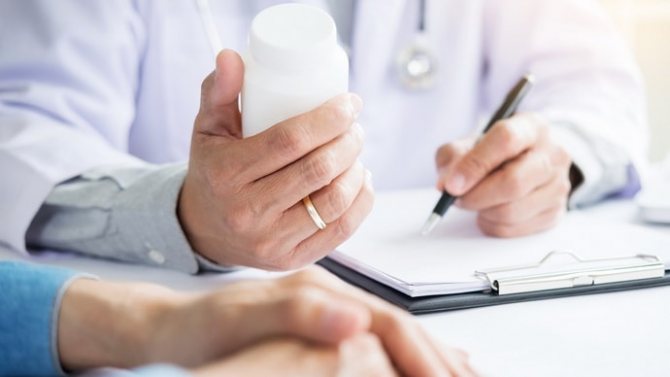
Therapy can be carried out in different ways - often people are forced to use medications, folk remedies and attend physical procedures. If you choose the right treatment regimen, then you can achieve positive results. You will definitely have to reconsider your lifestyle and take into account the tips to consolidate the effect.
If my liver itches, am I sick?
The liver is one of the most important organs of the human body. It takes part in the metabolism of biologically active compounds, works as a filter, removing decay products, and participates in all metabolic processes.
Liver diseases are serious pathologies that affect all organ systems.
Their symptoms do not always manifest themselves in the way people are usually accustomed to perceive them (pain in the right hypochondrium, yellowness of the mucous membranes and skin).
Sometimes a symptom of liver disease is itching of the skin or rashes on the skin. Therefore, it is important to know why the skin itches with hepatitis C; with cholecystitis, hepatosis, cirrhosis of the liver, skin itching is disturbing, so as not to miss such a sign, mistaking it for dermatitis or allergies.
Liver diseases that cause itchy skin
Itching is associated with the entry into the blood of complex biochemical compounds that hepatocyte cells produce from cholesterol (bile acids).
They are needed for digestion, regulating intestinal microflora, and maintaining normal blood cholesterol levels. If the liver is healthy, then bile acids do not enter the blood.
If its functioning is disrupted, a large amount of acids enters the blood and irritates the nerve endings of the skin, which causes skin itching.
Itching is an early symptom of many liver diseases:
- Cholestasis (cholestatic syndrome).
This is a pathological disorder of bile production. Its danger lies in the fact that irreversible processes occur in the liver, hepatocytes are damaged, they are replaced by connective tissue, and cirrhosis can develop.
The development of cholestasis is facilitated by the occurrence of infection due to viral hepatitis, toxic liver poisoning, and cirrhosis.
Sometimes cholestatic pruritus is caused by taking antibiotics such as erythromycin, phenothiazine and hormones such as estrogens, progesterone, testosterone.
In the presence of hepatic itching, the desire to scratch most often occurs at night and is usually accompanied by jaundice of the skin and pain in the right side. Skin itching with cholestasis differs from allergic one in that after taking antihistamines the itching does not disappear.
If the skin turns yellow and then pale green, it is called subhepatic jaundice. In this case, the body itches very much, all painful sensations become more intense. Cholestatic itching is complemented by symptoms of fever, as well as nausea, vomiting, weakness, and sleep disturbances.
- The appearance of tumors of both benign and malignant nature.
Cancerous diseases lead to compression of the duct from the outside. Because of this, the outflow of bile is disrupted, and excess bile acids are absorbed into the blood, thereby causing severe itching and irritation. Neoplasms change the composition of bile and cause tissue ulceration. Bile can spread through tissues, bypassing the liver.
Cholecystitis is an inflammation of the gallbladder that prevents it from functioning normally. Because of this, stagnation of bile develops, toxic elements of the liver are released into the blood.
Also, itchy skin with cholecystitis can appear as a result of impaired absorption of substances that cannot enter the tissues without bile. These are, for example, fat-soluble vitamins and fats. If there is not enough bile, then these components do not enter the blood and the body does not receive vitamins A, K, D. Because of this, the skin becomes dry and irritated, which provokes itching.
Itching of the skin with this disease may be the only symptom; it is associated with the destruction of liver cells. It mainly affects the arms and legs.
Severe itching of the skin during hepatitis indicates the beginning of the acute phase of the disease. In addition to this, rashes appear on the skin, which itch and become inflamed, preventing you from living in peace. It is important to know why the body itches with hepatitis.
Doctors believe that itchy skin with hepatitis and cirrhosis is caused by the accumulation of toxic substances in the body, which the damaged liver cannot remove in a timely manner.
In this case, bilirubin and bile acids enter the blood, which cause itching and at the same time stain the skin and mucous membranes yellow.
IMPORTANT! Skin itching with hepatitis C may not appear, the disease is asymptomatic and therefore the patient consults a doctor only when yellowness of the skin, change in the color of urine and feces appear, that is, the disease has already entered the second or third stage.
Diagnostics and therapy
Skin itching itself in the presence of liver problems is not treated, since it is only a symptom of a true disease. It is necessary to find out what disease of the liver or gallbladder caused such a symptom, and treat it. The sooner the diagnosis is made and treatment is started, the faster the cholestatic itching of the skin will disappear.
If there is skin itching, the doctor prescribes the following diagnostic methods:
- General and biochemical blood test. He is especially interested in indicators of bilirubin, liver enzymes, serum protein, cholesterol;
- Ultrasound of the gallbladder, liver, pancreas;
- coagulogram.
The best treatment option is to eliminate the cause that caused the itching and, if necessary, additional use of groups of certain drugs.
Complex treatment of skin itching in cholestasis is usually used, the main drugs of which and their effect are discussed in the following table:
| Drugs. | Purpose. |
| Allohol, Festal, Holenzim. | Designed to increase the digestibility of fats and fat-soluble vitamins. If itching occurs due to cholestasis, treatment with these drugs helps well, since they contain bile components that stimulate its outflow. |
| Hepatoprotectors. Essentiale Forte N, Gepatrin. | Drugs that restore the function of liver cells. |
| Drugs that eliminate intoxication of the body (Hemodez, Polysorb). | Sorbents, special solutions for droppers to cleanse the blood. |
| Glucocorticoids (Prednisolone, Hydrocortisone). | They help relieve itching caused by exposure to bile acids. |
| Antibacterial and antiviral, anti-inflammatory drugs. | It is especially important to use them for viral hepatitis. But before you get rid of itching due to hepatitis C, you need to consult a doctor. Only he can prescribe specific medications and their dosage. |
| Ursosan, Ursofalk. | Preparations containing ursodeoxycholic acid. They bind with bile acids to form non-toxic compounds, which suppresses skin itching. |
General recommendations
You can get rid of liver itching if you improve the condition of your liver and actively treat the disease. Doctors advise leading a healthy lifestyle to avoid complications. You need to give up bad habits - quit smoking, do not drink alcoholic beverages. Under the influence of negative factors, the liver is destroyed, which is why the patient experiences alarming symptoms.
Other tips:
- There is no need to overheat the dermis when visiting saunas and steam baths. If it is hot outside and indoors, then the itching will become stronger. You can get rid of unpleasant sensations by taking a cool shower.
- It is necessary to treat the dermis with special ointments and gels that have a cooling effect.
- You should choose wardrobe items only from natural materials to prevent irritation of the dermis.
- It is recommended to avoid stressful situations and increased physical activity, so as not to provoke an exacerbation of liver problems. If a person is not vigilant about his health, then the itching will gradually intensify.
- If an unpleasant symptom was provoked by the toxic effects of medications, you should stop taking them. After stopping the drug, the discomfort should subside within a few days.

The condition of the skin with liver diseases worsens significantly, so it is often necessary to take additional medications. It is important to restore organ function in order to eliminate unpleasant symptoms. Only in this case can you get rid of body itching, rashes and other pathological signs.
Itching in liver diseases - treatment and diet
Itching accompanies many liver diseases: primary biliary cirrhosis, extrahepatic blockage of the bile ducts, hepatitis of various etiologies. Itching is the most painful for the patient and the most constant symptom of chronic cholestasis.
Itching accompanies many liver diseases: primary biliary cirrhosis, extrahepatic blockage of the bile ducts, hepatitis of various etiologies. Itching is the most painful for the patient and the most constant symptom of chronic cholestasis.
Itching occurs in 20-25% of all patients with jaundice, in 100% of patients with primary biliary cirrhosis, intense generalized itching in 60-75% of patients precedes all other symptoms of biliary cirrhosis. It can occur 1-2 years before the onset of jaundice. The disappearance of itching in liver diseases is sometimes a poor prognostic sign that indicates liver failure. With itching associated with liver diseases, a rash, skin pigmentation, and “liver stars” are possible. All these symptoms together force the doctor to pay attention to the liver in order to make the correct diagnosis in time.
Causes of itching in liver diseases.
1. Use of certain medications, especially when taken uncontrolled.
2. Increased levels of bile salts in plasma.
3. Extrahepatic blockage of the bile ducts.
4. The use of some little-studied cholesterol metabolites.
It is possible that cholestatic itching is not directly related to the content of bile acids in the tissues of the body, but it can be caused by certain inflammatory mediators that are released in the skin under the influence of bile acids.
To distinguish hepatic itching from itching, which is associated with an allergic reaction of the body, it is necessary to pay attention to one circumstance: hepatic itching does not stop or is only slightly reduced by antihistamines.
There are generally accepted methods for the treatment of cholestatic itching, based on the recognition of the decisive role of bile salts. But it is also necessary to consider other possible treatment regimens, with the help of which the main pathological process is affected, which contributed to the appearance of skin itching. It is important to remember that this should be a set of measures aimed at eliminating this unpleasant symptom that threatens human health.
Whatever the cause of skin itching in liver diseases, active treatment of the disease causing itching, as well as the use of hepatoprotective drugs, is indispensable, since they stimulate the restoration and functioning of the cells of the liver parenchyma and biliary elements. In addition, they protect hepatocytes from the pathogenic effects of toxic substances such as drugs, unhealthy and low-quality foods (fatty or fried foods, smoked foods, alcohol), chemicals and other damaging factors.
Cholestasis
– disruption of the process of synthesis and outflow of bile. This pathological condition occurs as a result of blockage of the bile ducts, which can be caused by hepatitis, cirrhosis and other liver diseases. The main symptom of cholestasis is itching.
Why does itching occur?
Itching of the skin with liver disease always occurs due to the fact that all substances that should be excreted with bile return to the blood. It may be accompanied by a pruriginous or papular rash. Mostly, patients have itchy palms and feet. But itching can also affect other parts of the body. It is incredibly important to prevent even small scratches from appearing, as they will become a “gateway” for various infections, and will not help get rid of unpleasant sensations.
Does cholestasis last for several weeks? The changes are reversible, and proper treatment will help restore health. But if you ignore body itching during liver disease, the process will become chronic and irreversible. Over the years it will lead to fibrosis or cirrhosis.
Treatment of skin itching in liver disease
Since skin itching in liver diseases is caused by a large amount of bile salts, first of all you need to get rid of them. Depending on the root causes of cholestasis, the method of eliminating itching is determined. For example, this could be taking medications that remove bile into the intestines, protect all cells from bile acids and stimulate their metabolism. Also, treatment of itching in liver diseases can be carried out using surgical or laparoscopic intervention. These procedures are aimed at:
- elimination of cholestasis symptoms;
- eliminating “blockages” (tumors or gallstones) that obstruct the normal flow of bile;
- restoration of the biliary system.
To prevent itching in liver diseases from bothering the patient so much, it is necessary to follow a diet. Nutrition should be complete and balanced. It is very important to limit the consumption of animal fats (no more than 50 g per day) or completely replace them with vegetable fats. You need to stop consuming carbonated drinks, juices, teas and drink more clean drinking water.
A regimen with limited psycho-emotional and physical stress will also help reduce itching during cholestasis. The patient should definitely rest during the day. If the patient is taking strong medications that affect liver function, they should be stopped.
Itching of the skin due to liver disease is quite common. In most cases, the palms and feet itch, but in advanced cases, the whole body can itch. It is extremely important to prevent scratching: this will only cause, in addition to the underlying disease, pustular damage, thereby opening the way inside the body for infection.
Medicines
Drug therapy is used after diagnostics and an accurate diagnosis have been made. Patients have to undergo ultrasound, biopsy and blood tests to determine the severity of the inflammation and the location of the lesion. After the diagnosis, the specialist will recommend therapy, which depends on the specific pathology.
To eliminate itching due to liver disease, your doctor may prescribe:
- Products containing ursodeoxycholic acid. It is important that the substance is in large dosage.
- Bile acid derivatives. Common medications include Cholestyramine and Cholestipol.
- Opoid receptor antagonists. Medical professionals often prescribe Naloxone and Naltrexone.
To relieve liver itching, you can use other drugs that help bring your health back to normal. Doctors often recommend sorbents that enter the intestines and eliminate accumulated toxins from the body. You can use Polysorb or activated carbon. The course of treatment ranges from several days to two weeks, depending on the situation.
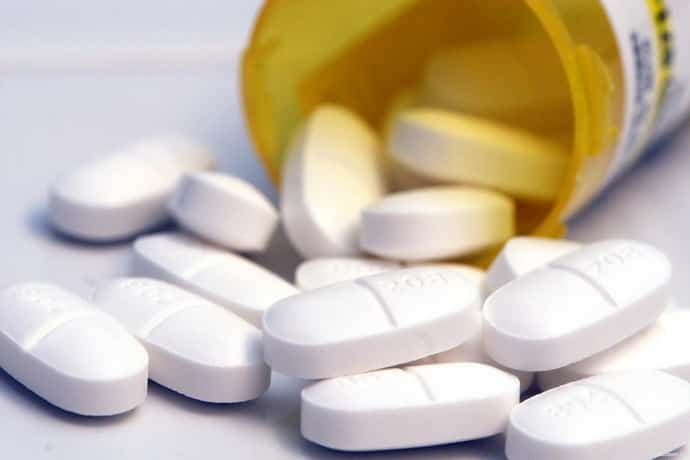
To support the body, you can take fat-soluble vitamins. This includes vitamins A, E, K, D. Non-steroidal anti-inflammatory drugs reduce the degree of inflammatory processes. They have a beneficial effect on the condition of liver tissue, but it is important to use them in reasonable dosages.
If a person has a weakened immune system, then it is imperative to support its function. To do this, it is recommended to use immunostimulating medications to strengthen the body's defenses. To get rid of pathogenic flora, you need to use antiviral and antibacterial agents. Probiotics will help normalize intestinal function.
When skin itching appears due to liver diseases, you should not self-medicate. It is important to visit your doctor regularly so that he can monitor changes and, if necessary, adjust the therapeutic regimen.
Why does a burning sensation occur in the hypochondrium on the right?
If the normal functioning of the liver, gallbladder, intestines and even the diaphragm is disrupted, the patient feels pain and burning in the right hypochondrium, which are considered characteristic signs.
Depending on the problem area, other symptoms also appear, which undoubtedly need to be taken a closer look at. The nature of the unpleasant sensations and accompanying manifestations indicate which organ needs examination.
A burning sensation in the right hypochondrium is a fairly common complaint of patients when visiting a therapist. Moreover, this applies to people with previous diagnoses, and people without health problems who engage in frequent physical activity. And despite the fact that the symptom does not cause much concern, such a signal from the body cannot be tolerated.
Causes of burning sensation in the right hypochondrium
Every person knows that on the right side there are organs whose interaction with each other is extremely important.
Burning pain on the right under the ribs can occur with problems with:
- Liver
- Gallbladder
- Colon and duodenum
- Loops of the small intestine
- Diaphragm
- Heads of the pancreas
- Right kidney.
This means that pain on the right side also occurs as a result of injuries to the listed organs of the abdominal region.
Depending on the neglect of the processes and the peculiarities of their course, the burning sensation can have a different character and be perceived differently.
Heart problems affect the functioning of the liver and other organs. When the heart is unable to perform its functions normally—pumping blood throughout the body—blood stagnation occurs in the organs. If blood stagnation occurs in the liver, it changes size and increases, resulting in a burning sensation in the right hypochondrium.
Let's consider other pathologies that provoke problems with the liver and, accordingly, cause pain:
- Adenoma
- Appendix - when it is located directly under the liver
- Inflammation of the lung on the right side
- Liver failure
- Liver abscess
- Secondary biliary cirrhosis of the liver, etc.
Diseases based on the nature of pain
To determine the reasons why it occurs, doctors find out what its nature is. Painful sensations, heaviness, burning in the right hypochondrium are the cause of problems with the gallbladder as a result of bile stagnation. The occurrence of such sensations is explained as follows: the abdominal wall in front puts pressure on the gallbladder, which provokes its tension and contraction.
Feeling better usually occurs after diarrhea. Acute pain occurs when an excess amount of liver bile with enzymes for digesting food accumulates in the organ. This bile is thrown into the duodenum, resulting in acute pain and burning in the right hypochondrium.
Burning pain on the right side most often indicates acute cholecystitis, which develops with inflammation of the gallbladder.
In this case, the accompanying signs are:
- Nausea
- Jaundice
- Itchy skin
Infections and uncontrolled consumption of fatty foods can provoke an exacerbation of this disease. Patients also feel a burning sensation in the right hypochondrium if they have gallstones .
With chronic inflammation of the gallbladder, patients feel a dull pain under the ribs on the right, accompanied by nausea, and the membranes of the eyes turn slightly yellow and the skin acquires a yellowish tint.
Common causes of burning in the right hypochondrium are pathologies caused by viruses and infections . So, pain occurs in the presence of hepatitis A , which can actually be “caught” by eating contaminated foods. Hepatitis B is considered a characteristic disease for people who take drugs and those who have had physical contact with them.
Hepatitis C virus is easily transmitted through contaminated blood . Toxic (acute) hepatitis is also known, which is considered the most dangerous for the human liver. When the liver is damaged by viruses, the patient may suffer from attacks of pain, accompanied by rapid deterioration in health, jaundice and elevated body temperature of the patient.
Those suffering from chronic hepatitis often experience nagging pain that occurs periodically. The disease occurs without visible symptoms and therefore leads to cirrhosis of the liver.
Aching pain and burning in the right hypochondrium are a sign of disruption of the gallbladder and bile ducts . This disorder is psychosomatic in nature. With dyskinesia, patients report the presence of a bitter taste in the mouth, constant fatigue, severe mood swings and pressing pain in the right side.
Pancreatitis is another cause of burning and severe throbbing pain on the right side. Unpleasant sensations gradually intensify and can develop into shingles.
Associated symptoms:
- Severe vomiting occurs, in which traces of bile are visible
- There is constant nausea
- Stomach upsets
- Feeling bloated
- The patient's body temperature rises above 39 degrees.
If these symptoms are ignored, the disease becomes chronic and a burning sensation in the right hypochondrium is accompanied by bursting pain.
Kidney problems also provoke discomfort in the hypochondrium. So, with pathology of the right kidney, the patient feels a stabbing pain, the localization of which radiates to the right side of the abdomen.
This condition accompanies:
- Nausea
- General weakness of the patient
- Vomit
- Increase in body temperature
- Pain during urination.
A burning sensation in the right hypochondrium after eating, night pain indicates a duodenal ulcer.
Unpleasant sensations also appear on an empty stomach, along with nausea, vomiting with blood, unpleasant belching and flatulence. With a complicated form of the ulcer, sharp stabbing pain, lack of strength and dizziness occur.
What to do if you experience a burning sensation
The occurrence of discomfort, regardless of its nature, is the first signal of a problem. This means that in order to make a diagnosis, eliminate the problem and avoid consequences, you need to seek qualified medical help.
If you experience periodic or constant pain and burning in the right hypochondrium for several days, it is important to visit a therapist, gastroenterologist and infectious disease specialist as soon as possible, who will help determine the source of the problem, select diagnostic methods and correctly determine subsequent treatment.
Source: https://PrichinaBoli.ru/podrebere/pochemu-voznikaet-zhzhenie-v-podrebere-sprava.html
About therapy methods
What to do if the liver itches inside and outside? After passing the examination, the attending physician will prescribe treatment. Note that therapy should be comprehensive, aimed at eliminating the underlying disease. If you treat only itchy skin, the pathology inside will go into an asymptomatic stage, becoming more active. Having established an accurate diagnosis, all efforts should be directed towards eliminating the root cause.
Along with the use of antipruritic drugs, hepatoprotectors are used, which enhance the outflow of bile and restore the natural removal of waste substances from the body. In advanced cases, hormone therapy is used.
Thus
If the liver itches inside or outside, you should not assume that this is a temporary phenomenon. In 99% of cases, liver itching is a clear symptom of the development of a serious internal disease. And even if you eliminate the itching on your own, the internal pathology does not disappear. The disease enters a new asymptomatic stage, which is much worse for patients.
The causes of unpleasant skin itching are considered to be allergies or dermatitis. But other problems can also provoke this manifestation - for example, disruption of the functioning of internal organs. This complicates the diagnosis and reduces the effectiveness of self-medication to a minimum. Body itching due to liver disease requires specific therapy.
The difference between allergic itching and hepatic itching
Itching of the skin due to liver disease most often occurs in the evening or at night. It occurs suddenly and can be quite intense, leading to acute discomfort and lack of relief when scratching. The disorder is accompanied by additional symptoms - pain in the right side, mild jaundice, shortness of breath and abnormal stool.
Although special gels and ointments, as well as oral antihistamines, help with standard allergic itching, they will not soothe liver disorders. The symptom will remain in the acute stage until the irritating effect of bile acids ends.
